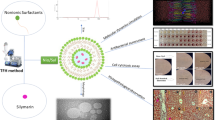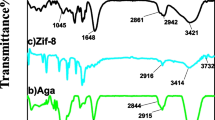Abstract
Biosurfactant rhamnolipids have been claimed to show biological activities of inhibiting the proliferation of cancer cells. In this study, the cytotoxicity of rhamnolipids was examined on four cancer cells (HepG2, Caco-2, Hela, MCF-7 cells) and two normal cells (HK-2 cell, primary hepatocyte). Interestingly, both cancer cells and normal cells exhibited similar sensitivities to the addition of rhamnolipids in culture medium, and the cytotoxicity was largely attenuated by the presence of fetal bovine serum (FBS) in culture medium. In correlation of the mono-/di-rhamnolipid cytotoxicity with the surface tension of culture medium, it was found that rhamnolipids triggered cytotoxicity whenever the surface tension of culture medium decreased below 41 mN/m irrespective of the FBS content in culture medium, cell line, or rhamnolipid congener. Similarly, each chemical surfactant (Tween-80, sodium dodecyl sulfate, and sodium dodecyl benzene sulfonate) could cause cytotoxicity on HepG2 cells whenever its addition made the surface tension under 41 mN/m in culture medium with or without the presence of FBS. It seems that rhamnolipids, like chemical surfactants, exhibited cytotoxicity by reducing the surface tension of culture medium rather than by changing its specific molecular structure, which had no selection on tumor cells. This study could offer helps to correct the misleading biological activity of rhamnolipids and to avoid the possible large wastes of time and expenses on developing the applications in antitumor drugs.






Similar content being viewed by others
Reference
Abbasi H, Noghabi KA, Ortiz A (2012) Interaction of a bacterial monorhamnolipid secreted by Pseudomonas aeruginosa MA01 with phosphatidylcholine model membranes. Chem Phys Lipids 165(7):745–752
Abdel-Mawgoud AM, Aboulwafa MM, Hassouna NA (2009) Characterization of rhamnolipid produced by Pseudomonas aeruginosa isolate Bs20. Appl Biochem Biotechnol 157(2):329–345
Abdel-Mawgoud AM, Lepine F, Deziel E (2010) Rhamnolipids: diversity of structures, microbial origins and roles. Appl Microbiol Biotechnol 86(5):1323–1336
Benincasa M, Abalos A, Oliveira I, Manresa A (2004) Chemical structure, surface properties and biological activities of the biosurfactant produced by Pseudomonas aeruginosa LBI from soapstock. Antonie Van Leeuwenhoek 85(1):1–8
Brockman HL, Momsen MM, Knudtson JR, Miller ST, Graff G, Yanni JM (2003) Interactions of olopatadine and selected antihistamines with model and natural membranes. Ocul Immunol Inflamm 11(4):247–268
Christova N, Tuleva B, Kril A, Georgieva M, Konstantinov S, Terziyski I, Nikolova B, Stoineva I (2013) Chemical structure and in vitro antitumor activity of rhamnolipids from Pseudomonas aeruginosa BN10. Appl Biochem Biotechnol 170(3):676–689
Dossel J, Meyer-Hoffert U, Schroder JM, Gerstel U (2012) Pseudomonas aeruginosa-derived rhamnolipids subvert the host innate immune response through manipulation of the human beta-defensin-2 expression. Cell Microbiol 14(9):1364–1375
Gudina EJ, Rangarajan V, Sen R, Rodrigues LR (2013) Potential therapeutic applications of biosurfactants. Trends Pharmacol Sci 34(12):667–675
Haussler S, Nimtz M, Domke T, Wray V, Steinmetz I (1998) Purification and characterization of a cytotoxic exolipid of Burkholderia pseudomallei. Infect Immun 66(4):1588–1593
Inacio AS, Mesquita KA, Baptista M, Ramalho-Santos J, Vaz WL, Vieira OV (2011) In vitro surfactant structure-toxicity relationships: implications for surfactant use in sexually transmitted infection prophylaxis and contraception. PLoS One 6(5):e19850
Kamal A, Shaik AB, Kumar CG, Mongolla P, Rani PU, Krishna KV, Mamidyala SK, Joseph J (2012) Metabolic profiling and biological activities of bioactive compounds produced by Pseudomonas sp. strain ICTB-745 isolated from Ladakh, India. J Microbiol Biotechnol 22(1):69–79
Khoshdast H, Abbasi H, Sam A, Noghabi KA (2012) Frothability and surface behavior of a rhamnolipid biosurfactant produced by Pseudomonas aeruginosa MA01. Biochem Eng J 60:127–134
Lotfabad TB, Abassi H, Ahmadkhaniha R, Roostaazad R, Masoomi F, Zahiri HS, Ahmadian G, Vali H, Noghabi KA (2010) Structural characterization of a rhamnolipid-type biosurfactant produced by Pseudomonas aeruginosa MR01: enhancement of di-rhamnolipid proportion using gamma irradiation. Colloids Surf B 81(2):397–405
Marchant R, Banat IM (2012) Biosurfactants: a sustainable replacement for chemical surfactants? Biotechnol Lett 34(9):1597–1605
Mata-Sandoval JC, Karns J, Torrents A (1999) High-performance liquid chromatography method for the characterization of rhamnolipid mixtures produced by pseudomonas aeruginosa UG2 on corn oil. J Chromatogr A 864(2):211–220
McAuley WJ, Jones DS, Kett VL (2009) Characterisation of the interaction of lactate dehydrogenase with Tween-20 using isothermal titration calorimetry, interfacial rheometry and surface tension measurements. J Pharm Sci 98(8):2659–2669
McClure CD, Schiller NL (1992) Effects of Pseudomonas aeruginosa rhamnolipids on human monocyte-derived macrophages. J Leukoc Biol 51(2):97–102
Ortiz A, Teruel JA, Espuny MJ, Marques A, Manresa A, Aranda FJ (2006) Effects of dirhamnolipid on the structural properties of phosphatidylcholine membranes. Int J Pharm 325(1–2):99–107
Pantazaki AA, Choli-Papadopoulou T (2012) On the Thermus thermophilus HB8 potential pathogenicity triggered from rhamnolipids secretion: morphological alterations and cytotoxicity induced on fibroblastic cell line. Amino Acids 42(5):1913–1926
Programs, U. E. P. A. O. o. P (2004) Rhamnolipid biosurfactant (PC code 110029) biopesticides registration action document. U. E. P. A. O. o. P. Programs, http://www.epa.gov/opp00001/chem_search/reg_actions/registration/decision_PC-110029_11-May-04.pdf
Sanchez M, Aranda FJ, Espuny MJ, Marques A, Teruel JA, Manresa A, Ortiz A (2008) Thermodynamic and structural changes associated with the interaction of a dirhamnolipid biosurfactant with bovine serum albumin. Langmuir 24(13):6487–6495
Sha R, Jiang L, Meng Q, Zhang G, Song Z (2012) Producing cell-free culture broth of rhamnolipids as a cost-effective fungicide against plant pathogens. J Basic Microbiol 52(4):458–466
Stipcevic T, Piljac T, Isseroff RR (2005) Di-rhamnolipid from Pseudomonas aeruginosa displays differential effects on human keratinocyte and fibroblast cultures. J Dermatol Sci 40(2):141–143
Takamura N, Rahman MH, Yamasaki K, Tsuruoka M, Otagiri M (1994) Interaction of benzothiadiazides with human serum albumin studied by dialysis and spectroscopic methods. Pharm Res 11(10):1452–1457
Thanomsub B, Pumeechockchai W, Limtrakul A, Arunrattiyakorn P, Petchleelaha W, Nitoda T, Kanzaki H (2006) Chemical structures and biological activities of rhamnolipids produced by Pseudomonas aeruginosa B189 isolated from milk factory waste. Bioresour Technol 97(18):2457–2461
Wang HZ, Chang CH, Lin CP, Tsai MC (1996) Using MTT viability assay to test the cytotoxicity of antibiotics and steroid to cultured porcine corneal endothelial cells. J Ocul Pharmacol Ther 12(1):35–43
Wu DQ, Zhang GL, Shen C, Zhao Q, Li H, Meng Q (2005) Evaluation of diffusion in gel entrapment cell culture within hollow fibers. World J Gastroenterol 11(11):1599–1604
Xia WJ, Onyuksel H (2000) Mechanistic studies on surfactant-induced membrane permeability enhancement. Pharm Res 17(5):612–618
Acknowledgments
We gratefully acknowledge the financial support of this study by the National Natural Science Foundation of China (NSFC; No. 21176216) and the National High-Tech 863 Project of China (No. 2014AA022104).
Author information
Authors and Affiliations
Corresponding author
Rights and permissions
About this article
Cite this article
Jiang, L., Shen, C., Long, X. et al. Rhamnolipids elicit the same cytotoxic sensitivity between cancer cell and normal cell by reducing surface tension of culture medium. Appl Microbiol Biotechnol 98, 10187–10196 (2014). https://doi.org/10.1007/s00253-014-6065-0
Received:
Revised:
Accepted:
Published:
Issue Date:
DOI: https://doi.org/10.1007/s00253-014-6065-0




